More than Half of all E-Buses in India Found on Maharashtra Roads
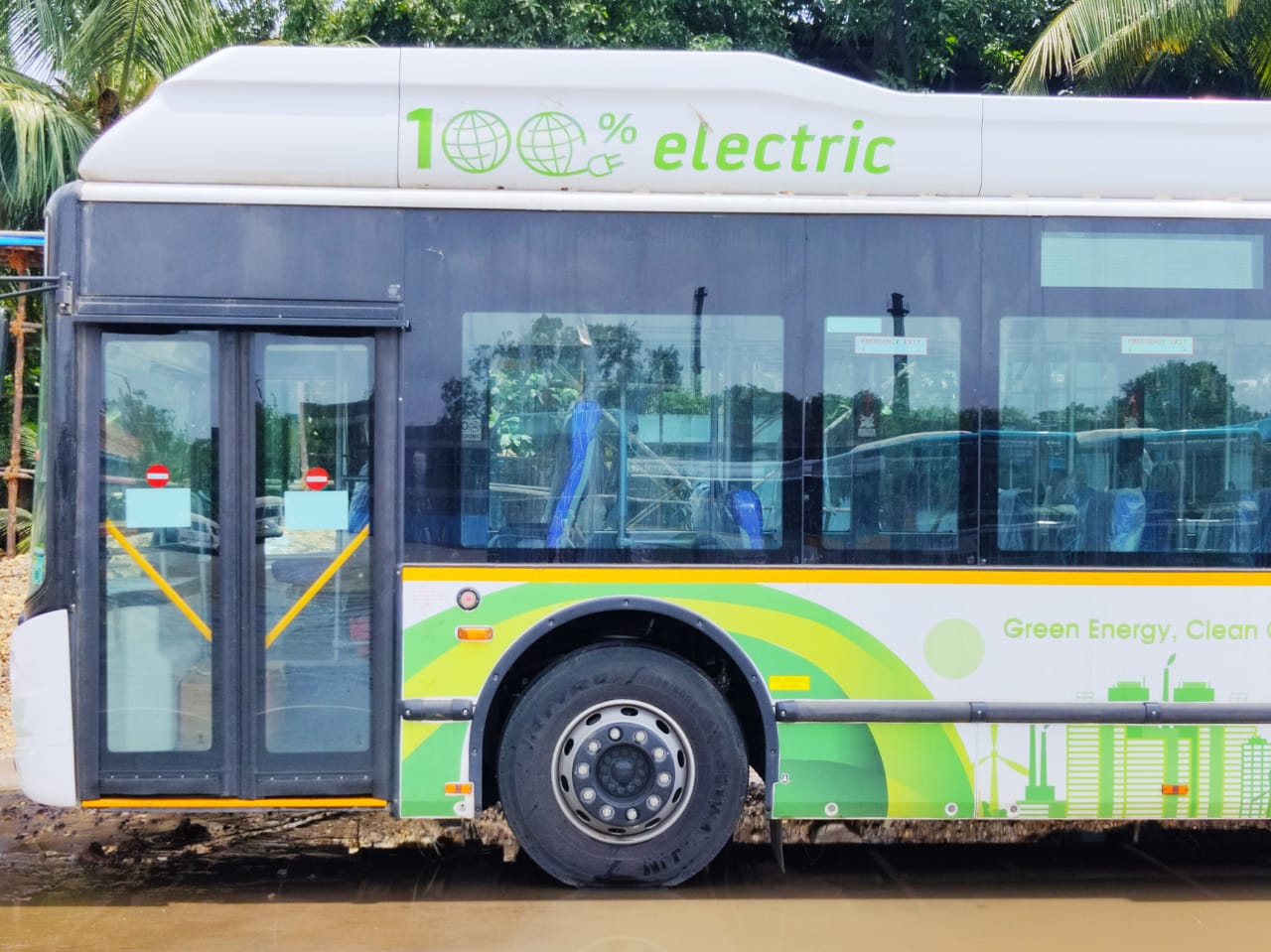
This is the first in a series of blogs on the growing deployment of electric buses across the country. The series is a deep-dive on investments from both central and state governments and the role of e-buses in mitigating the impacts of climate change.
Over the last few years, several state governments have not only notified progressive electric vehicle policies but have also started investing in electric buses – reflecting their commitment towards mitigating impacts of climate change. While state governments are loosening their purse strings to purchase new-age buses, city transport corporations are embracing a change in operations and management, keeping in mind the newer demands from electric buses.
Of the 6,265 electric buses already sanctioned under FAME II, more than 900 are on the road. These buses are already proving their role in the battle towards reducing carbon emissions. Around 958 buses have covered transported passengers more than 51 million kilometres, saving at least 20.4 million litres of fossil fuel from being burnt. WRI India calculations show that this prevented 0.3 million tonnes of carbon dioxide (CO2) from being released into the atmosphere.
Going by this, by the time all sanctioned buses hit the road, they are expected to run more than four billion kilometres over the course of their lifetime. This translates to 1.2 billion litres of fuel saved, reducing carbon emissions by 2.6 million tonnes.
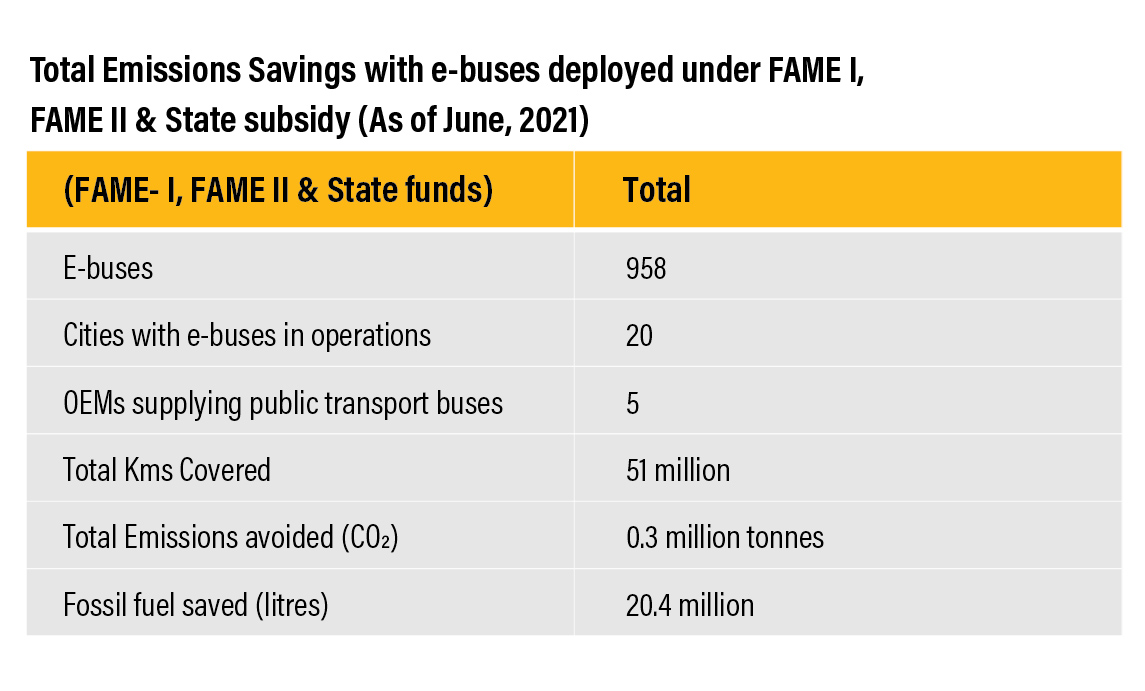
Note: Considering mileage of 2.5 km/l for ICE buses.
States like Maharashtra and Gujarat already have experience in entering GCC contracts with private players and were better equipped to transition to electric buses. States that don't have this experience, on the other hand, are slower to move.
Maharashtra is leading the race among states to electrify public transportation systems. Of the 958 electric buses running on Indian roads, some 49% (476) are in Maharashtra – ahead by a large margin. These buses have already travelled around 23 million kilometres. While the states of Gujarat and West Bengal, with 7.6% and 7.14% respectively, stand at a distant second and third position in the list of states with most electric buses.
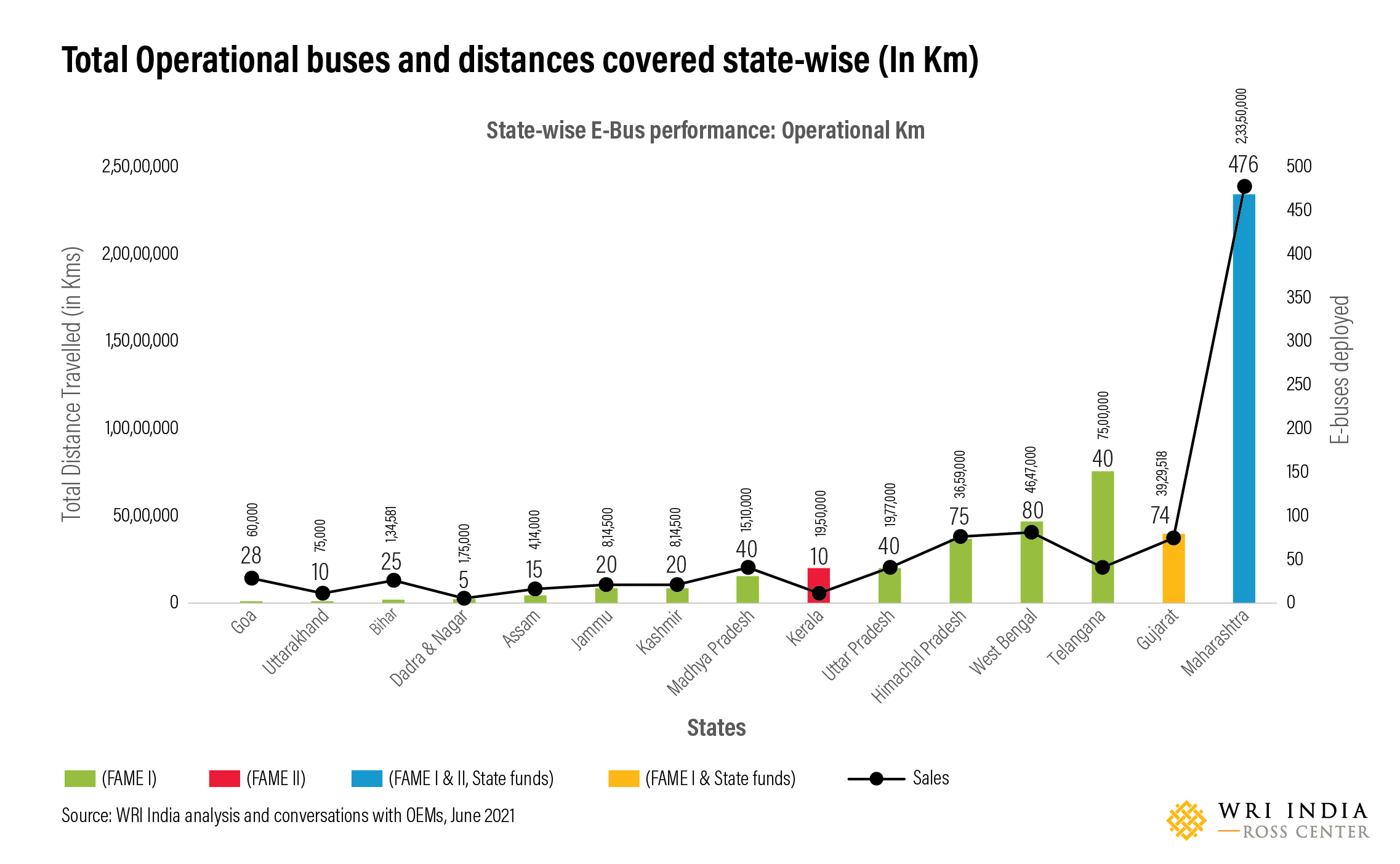
It is, therefore, not surprising that Mumbai and Pune are among the top in the list with cities with the most electric buses. The Pune Mahanagar Parivahan Mahamandal (PMPML) continues to be at the forefront of investing in future technologies, especially related to bus operations. As of June this year, the 150 electric buses operated by transport corporations in Pune have travelled 10 million kilometres – making it the best performing city in the country. Moreover, in 2019, it became home to the first depot in Bhekrai Nagar. As a result, the western city also leads in total reductions in carbon emissions. Mumbai and Navi Mumbai, on the other hand, operate some 321 electric buses, which have travelled 13 million kilometres as of June 2021.
Being an early adaptor to electric buses, Kolkata availed a greater advantage from the first phase of FAME in 2015. As a result, it comes forth in emission reductions despite having fewer buses than cities like Ahmedabad and Hyderabad. With Gujarat and Telangana quick to amend EV policies to keep up with the dynamic sector, e-bus deployment in Ahmedabad and Hyderabad is expected to surge ahead. Electric buses in Ahmedabad travelled 3.8 million kilometres, while those in Hyderabad travelled 7.5 million kilometres as of June 2021. They come third and fourth, respectively, when it comes to emission reductions.
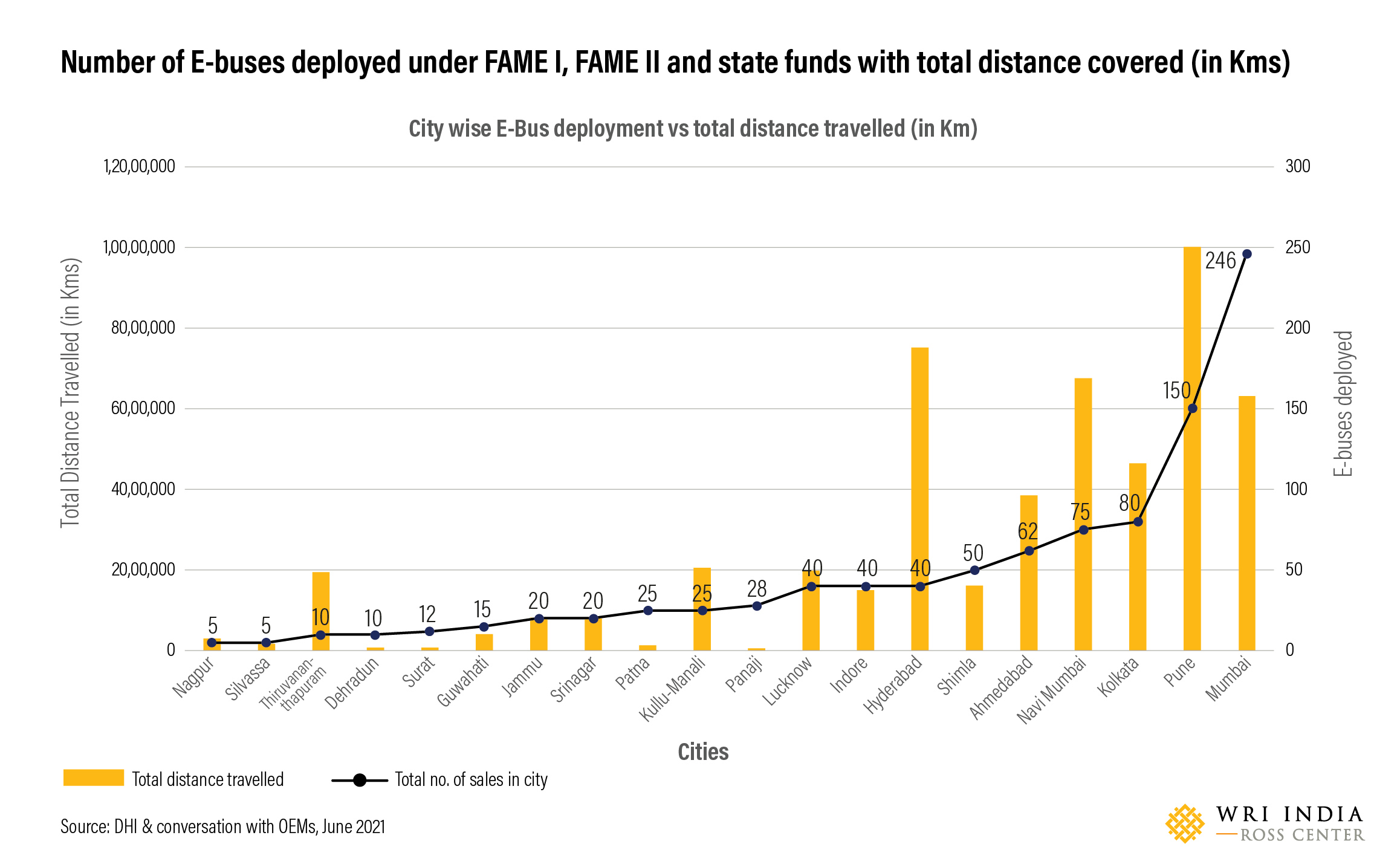
Maharashtra and Gujarat have been faster to adopt electric buses, with significant support from private players like Tata Motors, Olectra Greentech, Ashok Leyland, JBM and PMI Electro Mobility Services. As a result, electric buses operated by these two states have already taken passengers over 43 million kilometres, which is expected to have prevented 3,679 tonnes of carbon dioxide from being released into the atmosphere.
Gujarat, so far, has procured and deployed 74 buses that have been operated for more than 3.9 million kilometres, saving the state from 73 kilotons of carbon dioxide from being released into the atmosphere.
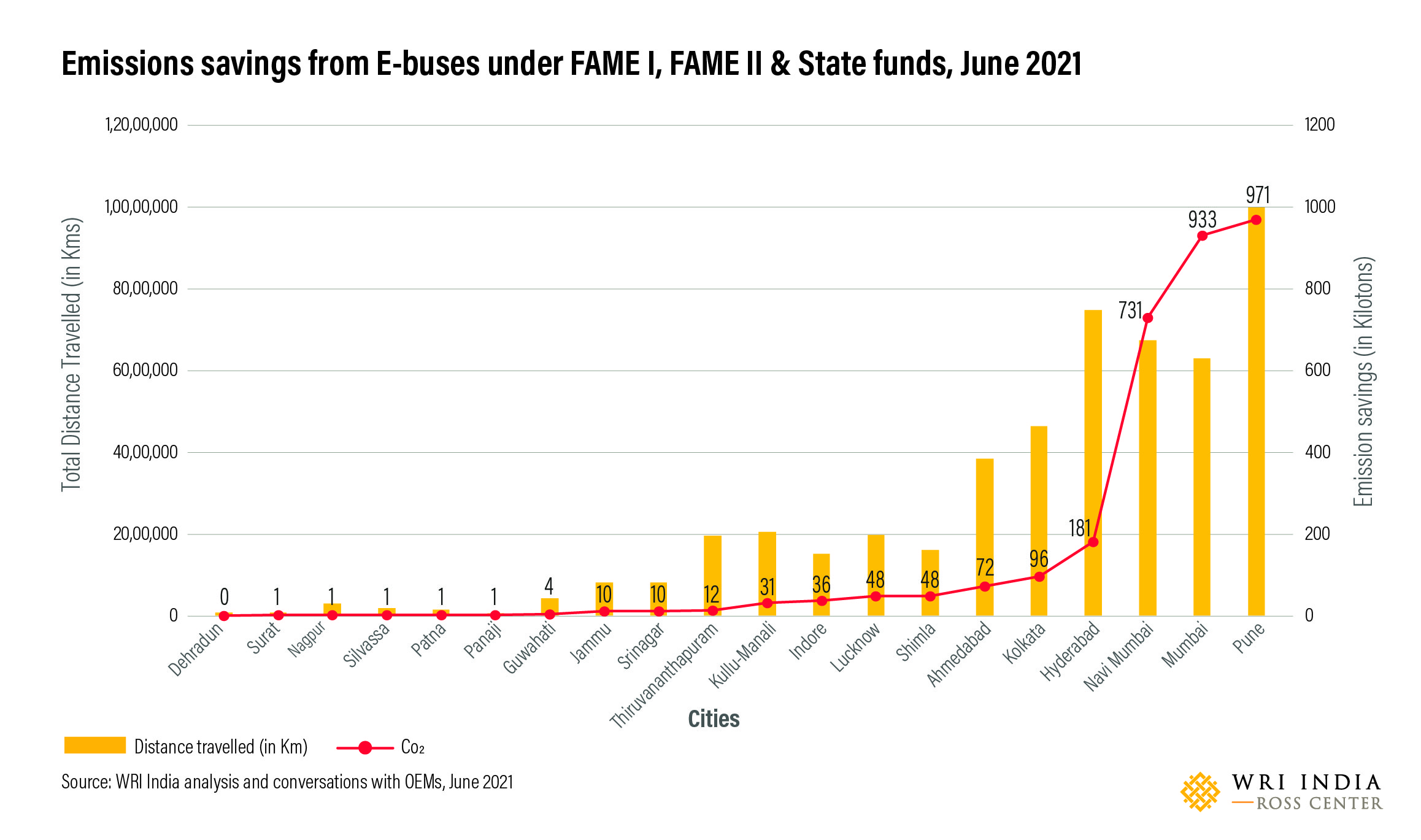
Among the southern states, Telangana leads with 40 e-buses which have reduced the state's carbon emissions by 0.41 million tonnes until June 2021. West Bengal, on the other hand, has 80 electric buses which have travelled at least 4.6 million kms so far. With the state's plan to procure 5,000 e-buses by the end of the decade, the carbon emissions from the state are expected to reduce by 780,000 tonnes.
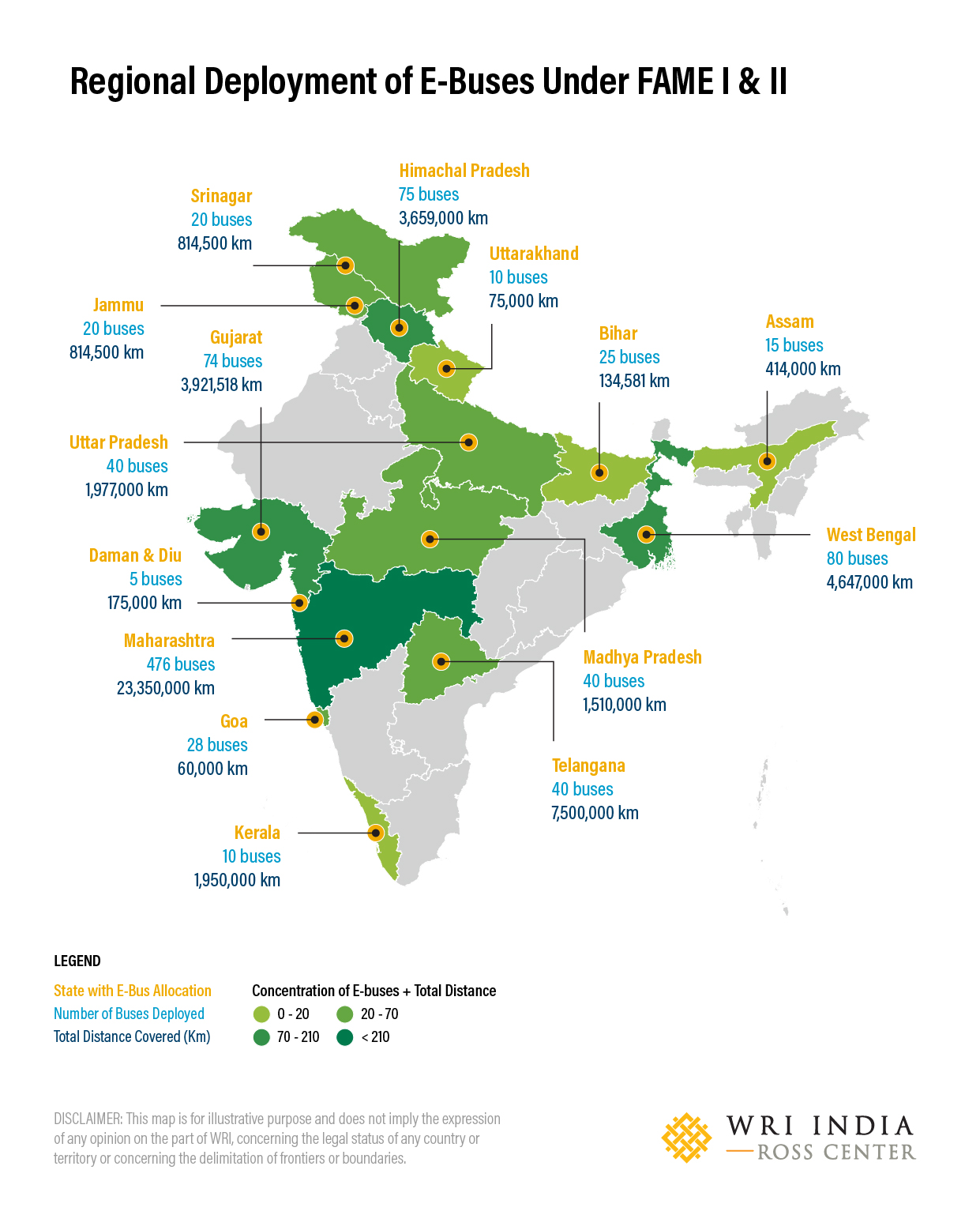
The 2019 amendment to the FAME scheme mandated bus agencies to adopt the GCC model for procuring e-buses, making it easier to procure electric buses without the burden of capital expenditure. Since western states like Gujarat and Maharashtra were already experienced in this model, they were able to deploy more electric buses when compared to other states. The FAME scheme introduced in 2015 gave subsidies would support state transport corporation in purchasing electric buses – which are at least 1.5 times the price of its diesel counterparts. However, the scheme failed to achieve its targets as state corporations did not have the budget to make these direct purchases but also lacked technical crew to maintain and operate this new technology. As a response, the second phase of FAME encouraged a 'gross cost contract' of procuring electric buses. In this model, instead of outright purchases, state transport corporations simply paid original equipment manufacturers or e-bus operators a per km cost for operations and maintenance. This model removes the risk involved in new technologies and puts the onus of charging buses on the private player.
Initiatives taken by transport corporations to switch to electric buses have already begun yielding results. With almost three-fourths of all public transport trips being made on a bus, carrying more than 68 million passengers daily, the demand for public buses is only growing. At least 200,000 more buses are required to be on the road by 2031 to meet India's public transportation demands. With the demand for public buses and share of renewable energy, both expected only rise, India is at an opportune time to ensure all new buses are electric.
Sanjay Bhatia is a Senior Consultant for the Sustainable Cities & Transport Program at WRI India.
Views expressed are personal.
About TUMI
Transformative Urban Mobility Initiative (TUMI) is the leading global implementation initiative on sustainable mobility formed through the union of 11 prestigious partners. TUMI supports transport projects all around the world and enables policymakers to transform urban mobility. TUMI supports innovative pilot projects around the world and shares knowledge with planners about modern mobility concepts. earn more about TUMI at: About | (TUMI) (transformative-mobility.org)
About TUMI E-Bus Mission
The TUMI E-Bus Mission is working with six global partners in 20 deep-dive cities to dramatically advance electric bus adoption across leading cities in the Global South. This mission is part of the Action Towards Climate Friendly Transport (ACT) initiative and TUMI, and is supported by the Federal Ministry for Economic Cooperation and Development (BMZ). Learn more about TUMI e-Bus Mission at: https://bit.ly/3pLcSN4
TUMI E-Bus Mission
